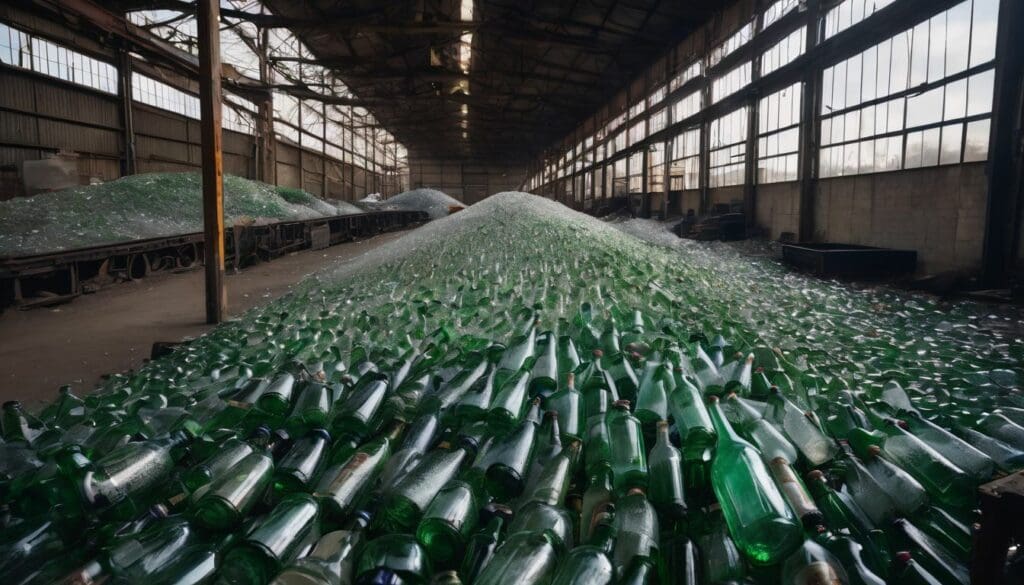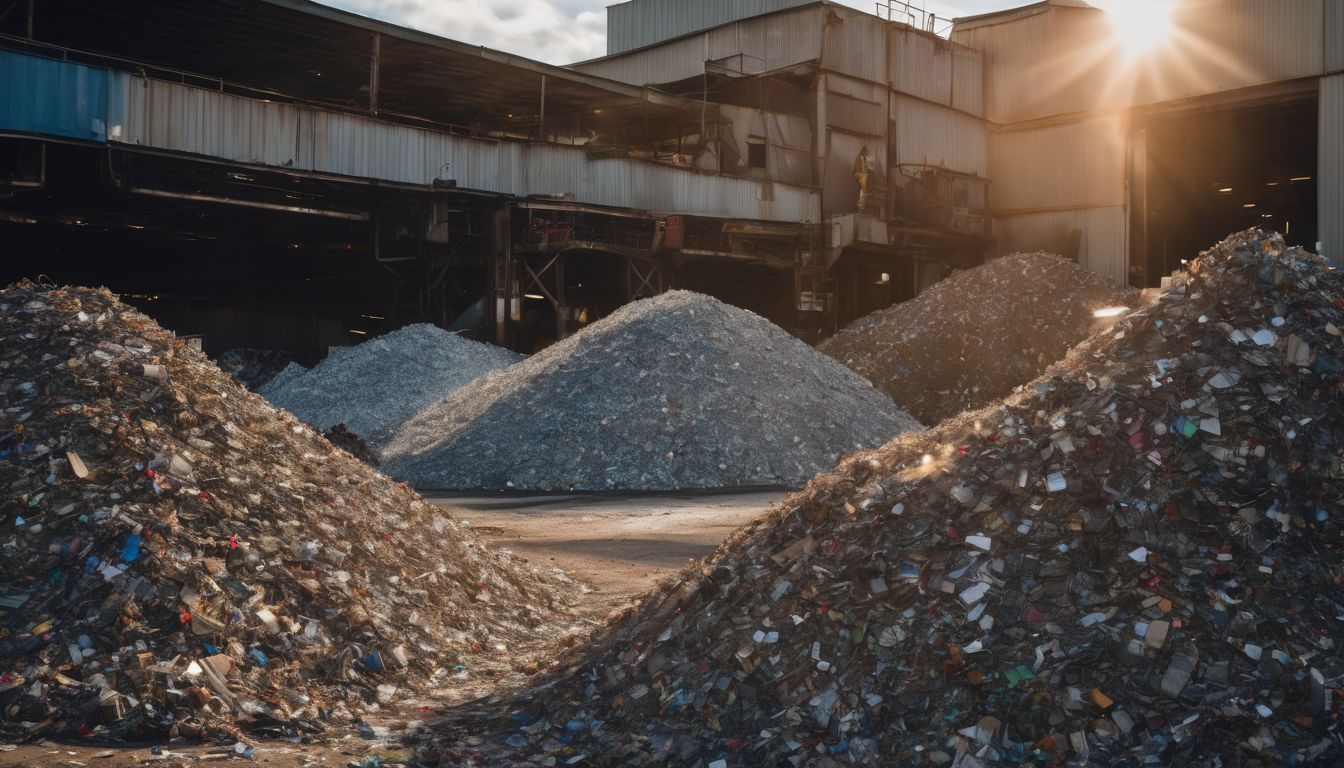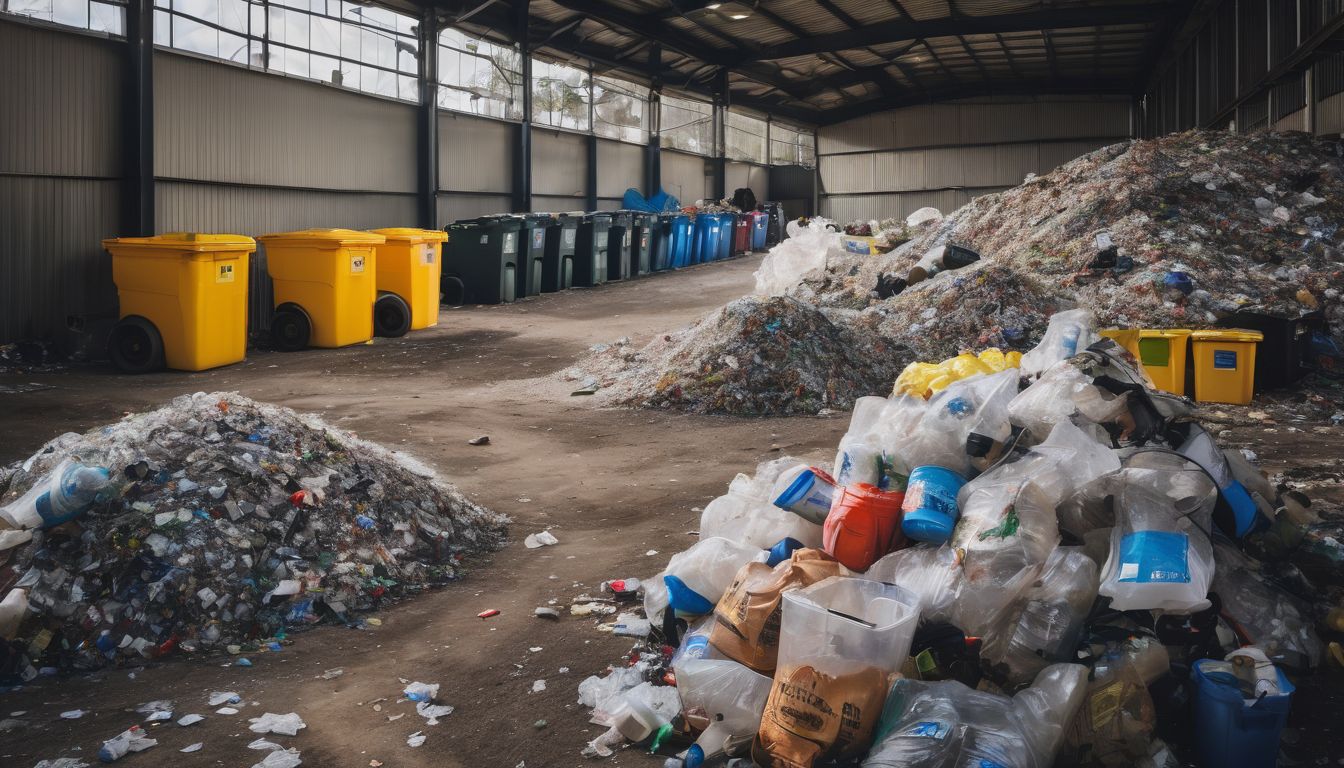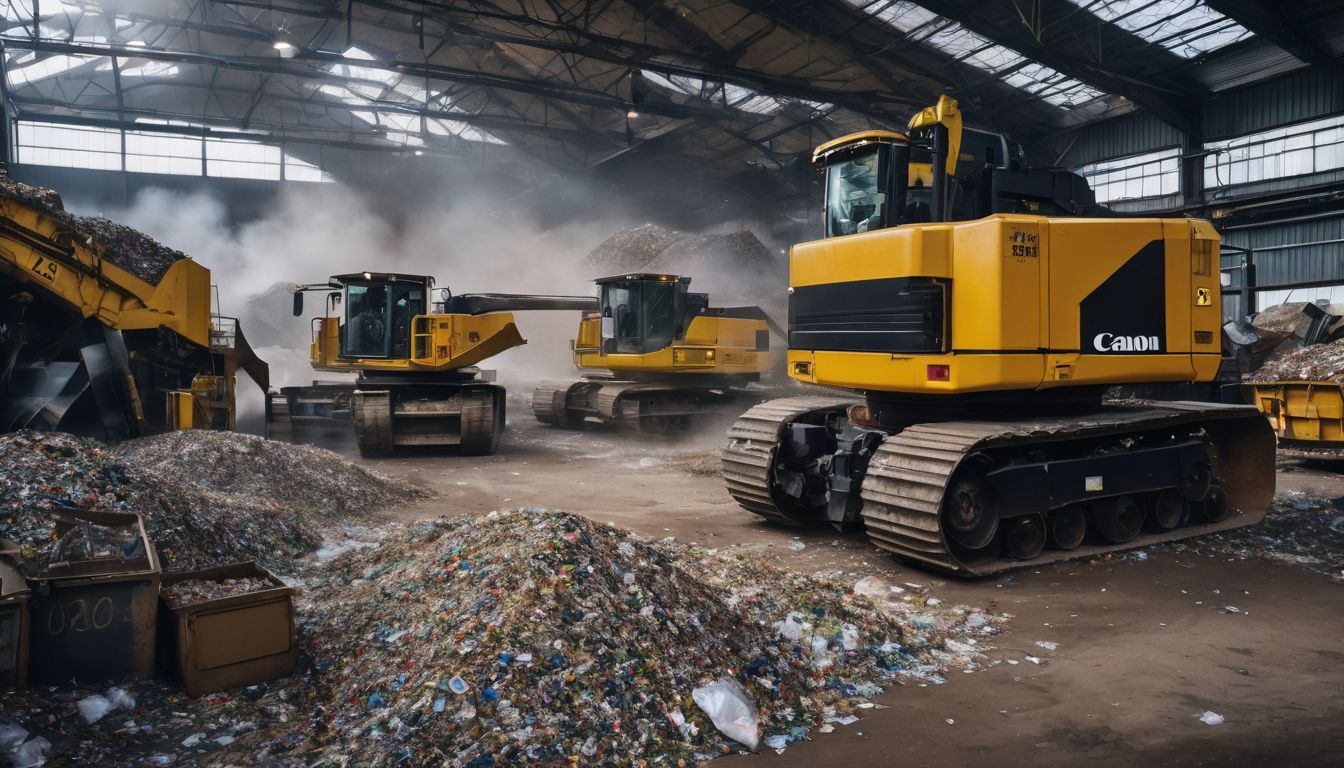Glass recycling seems straightforward, but it’s more complex than you might think. In the UK alone, around 67% of glass packaging gets recycled each year. This article explores why boosting this number is a challenge and how we can all play a part in making things better.
Stay tuned to discover simple steps towards greener living!
Key Takeaways
- Contamination significantly affects the quality of recycled glass, with improper disposal of non-recyclable materials leading to increased processing costs and reduced profitability for recycling facilities.
- High energy costs from transportation and processing are barriers to efficient glass recycling; advancements in technology can lower these costs and make recycling more sustainable.
- A limited market for cullet challenges the industry, yet strong demand from manufacturers using recycled glass as a raw material can improve profitability and environmental outcomes.
- Proper sorting is essential for high – quality cullet production; investing in modern machinery helps ensure purity, which is critical for effective glass reuse in manufacturing processes.
- Collaboration between consumers, manufacturers, retailers, and recyclers is key to overcoming recycling challenges by reducing waste and fostering a circular economy where resources are responsibly managed.
The Current State of Glass Recycling
Glass recycling faces challenges such as contamination, high energy costs, and difficulties in transportation and distribution. Additionally, the markets for cullet (recycled glass) are limited, making it challenging to sustain profitable recycling processes.
Contamination
Contamination poses a serious threat to the integrity of glass recycling. When bottles and jars get mixed with other materials like plastics, ceramics, or even small amounts of food waste, it compromises the quality of recycled glass, known as cullet.
Recycling plants struggle intensely with this contamination issue because tainted cullet can ruin entire batches destined for new products.
Sorting out these unwanted elements requires extra time and resources that many facilities lack. The problem escalates when people toss non-recyclable glass into bins without thinking about the environmental impact.
Every contaminated piece increases processing costs and reduces profitability for recyclers who are trying to manage waste responsibly. For sustainability and effective waste management, keeping rubbish separate is crucial; otherwise, we risk valuable recyclable material ending up in landfills instead of being transformed back into usable items.
Energy Costs
Glass recycling faces significant energy costs, which play a crucial role in the overall sustainability of the process. These costs stem from the transportation and processing of glass waste.
Energy-intensive machinery is required to sort, crush, melt, and re-shape glass into new products. Moreover, the need for consistent heating at high temperatures during melting significantly contributes to these energy expenses.
Reducing energy costs is essential in making glass recycling more financially viable and environmentally sustainable. Implementing innovative technologies that require less energy for processing can pave the way towards a more efficient and cost-effective method of recycling glass waste.
Transportation and Distribution
Glass recyclers face the challenge of transporting and distributing glass waste to recycling facilities. This process incurs transportation costs and requires efficient logistics to ensure that the glass material reaches the appropriate processing centres without additional environmental impact.
Coordination with local municipalities and waste management companies is essential to facilitate a streamlined transportation system for glass recycling, minimising energy use and maximising the potential for sustainable practices.
The distribution of recycled glass cullet also presents challenges in finding suitable markets for the end product. Establishing partnerships with manufacturers and industries that utilise recycled glass as raw material is crucial in creating a demand for cullet, ensuring its profitability within the circular economy model.
Markets for Cullet
Glass cullet, which is crushed, recycled glass, has a range of potential markets. It can be used in the production of new glass containers, fiberglass insulation, and various other glass products.
Additionally, it can also substitute for sand and gravel in construction projects. The demand for cullet is increasing as companies seek sustainable alternatives and consumers become more environmentally conscious.
Glass recycling businesses need to establish strong relationships with manufacturers who use cullet as a raw material. This collaboration creates a steady market for the recycled product while reducing the need for virgin materials.
Challenges to Improving Glass Recycling Processes
The lack of proper sorting techniques, difficulty in obtaining usable glass, and the high cost of processing are major obstacles in improving glass recycling processes. Find out how these challenges can be overcome by reading the full blog.
Lack of proper sorting
Proper sorting of glass for recycling is essential to ensure the quality and purity of cullet. Inadequate sorting can lead to contamination, making the recycled glass less valuable and more challenging to reuse in manufacturing processes.
This issue not only affects profitability but also hampers efforts to increase recycling rates and reduce environmental impact. Implementing efficient sorting technologies and training staff on proper waste management techniques are crucial steps in addressing this challenge.
Adequate investment in modern machinery and technological advancements is vital for improving the efficiency of glass sorting processes. By embracing innovative solutions, such as optical sorters and automated systems, recyclers can enhance their capability to segregate different types of glass effectively, contributing to a more sustainable approach to waste management while reducing the strain on natural resources.
Difficulty in obtaining usable glass
Obtaining usable glass for recycling poses a significant challenge due to the complex mix of glass types and colors. Sorting through this diverse range can be intricate, often requiring advanced technology and manual effort to achieve the required level of purity.
Moreover, ensuring that the collected glass is free from contaminants such as ceramics, plastics, or metals further adds to the difficulty in obtaining high-quality cullet for recycling processes.
Despite advancements in sorting technology, obtaining clean and usable glass remains an ongoing challenge in the pursuit of sustainable glass recycling practices. The intricacies involved in sourcing viable materials continue to demand innovative solutions to streamline the process effectively while maintaining profitability and environmental responsibility.
Cost of processing
To successfully recycle glass, the cost of processing remains a critical challenge. Energy-intensive processes and advanced sorting technologies significantly add to the overall expense.
Additionally, transportation and distribution costs further burden the profitability of glass recycling operations. Despite these challenges, finding efficient and cost-effective methods for processing glass is crucial in increasing recycling rates and reducing environmental impact.
Market fluctuations also influence the cost of processing glass, making it essential to find sustainable solutions that balance economic viability with environmental benefits. Collaborating with manufacturers and retailers can lead to economies of scale that help offset some of these costs while contributing to a more circular economy.
Solutions for Overcoming Glass Recycling Challenges
To overcome the challenges of glass recycling, reducing glass consumption and seeking alternative materials are key solutions. Collaboration with manufacturers and retailers can also help improve the process.
Reducing glass consumption
To reduce glass consumption, individuals can opt for products with minimal or no packaging made from glass, choosing alternatives like reusable containers or metal and paper packaging.
Additionally, minimising single-use items that are often packaged in glass is a simple way to help decrease overall demand for glass production. Furthermore, consumers can support initiatives that promote the use of alternative materials in place of glass where feasible.
An effective strategy to decrease reliance on single-use glass is also through advocating for policies that encourage manufacturers and retailers to explore sustainable alternatives.
Seeking alternative materials
Glass recycling faces many challenges, making it important to seek alternative materials. This involves exploring sustainable options for packaging and single-use items. By embracing new materials, we can reduce the environmental impact of glass waste and move towards a more circular economy.
Finding alternative materials is essential in increasing glass recycling rates and achieving resource conservation.
Exploring adaptable and environmentally friendly alternatives ensures reduction in landfill waste and supports sustainable glass recycling solutions. Environmantally conscious individuals should consider the benefits of seeking alternative materials as an effective way to address the struggles faced by glass recycling plants and improve overall waste management practices.
Collaboration with manufacturers and retailers
Manufacturers and retailers play a crucial role in improving glass recycling. By using eco-friendly packaging and designing products with recyclability in mind, they can reduce the environmental impact of single-use items.
Collaboration between manufacturers, retailers, and recycling facilities also ensures that more recycled glass can be used in new products, thereby reducing the need for raw materials.
Seeking support from manufacturers and retailers to promote sustainable practices is essential for effective glass waste management. Together, they contribute significantly to creating a circular economy by closing the loop on glass production and consumption.
The Importance of Overcoming Glass Recycling Challenges
Overcoming glass recycling challenges is crucial for reducing environmental impact and moving towards a circular economy. By addressing the difficulties in glass recycling, we can work towards significantly reducing the amount of waste sent to landfills and conserving valuable resources.
Reducing environmental impact
Reducing environmental impact is crucial for the sustainability of our planet. By cutting down on single-use items and recycling glass, we can significantly decrease the amount of waste that ends up in landfills.
Additionally, reducing glass consumption and seeking alternative materials will help lower energy costs and minimise transportation needs, ultimately lessening the carbon footprint associated with glass production and recycling.
Collaboration with manufacturers and retailers is also essential to push for more sustainable packaging solutions, which will contribute to a circular economy where resources are reused and waste is minimised.
Moving towards circular economy
Transitioning to a circular economy involves rethinking how we use and manage resources. Embracing sustainable practices like glass recycling is essential for reducing waste sent to landfills and conserving energy.
By prioritising recyclability, we can contribute to the creation of a closed-loop system that minimises environmental impact and fosters resource efficiency.
Supporting glass recycling also encourages innovation in recycling technology, promoting a shift towards more sustainable materials. Making conscious choices about single-use items and advocating for effective sorting solutions are vital steps toward creating a circular economy where every aspect of production, consumption, and disposal contributes to environmental conservation.
Conclusion and Call to Action
In conclusion, addressing the challenges of glass recycling requires collective effort and innovative solutions. We must focus on reducing glass consumption, seeking alternative materials, and collaborating with manufacturers and retailers.
Overcoming these obstacles is crucial for reducing environmental impact and moving towards a circular economy. It’s vital that we take action to support glass recycling initiatives and contribute to a more sustainable future.
FAQs
1. What are the main challenges in glass recycling?
The challenges include sorting difficulties with single-use items, struggles faced by recycling plants to process glass, and launching effective glass recycling programs.
2. Why do US recycling plants struggle with glass?
US recycling plants face problems due to contamination of glass materials which complicates the sorting process and often leads them closer to landfills instead of being recycled.
3. How can we improve sorting glass for recycling?
To overcome sorting difficulties, invest in better technology at plants and educate communities on separating different types of glass before they reach the facility.
4. Can starting a new glass recycling program reduce landfill waste?
Yes, launching a successful program tackles landfill reduction by ensuring more used glasses get recycled efficiently rather than discarded as waste.





